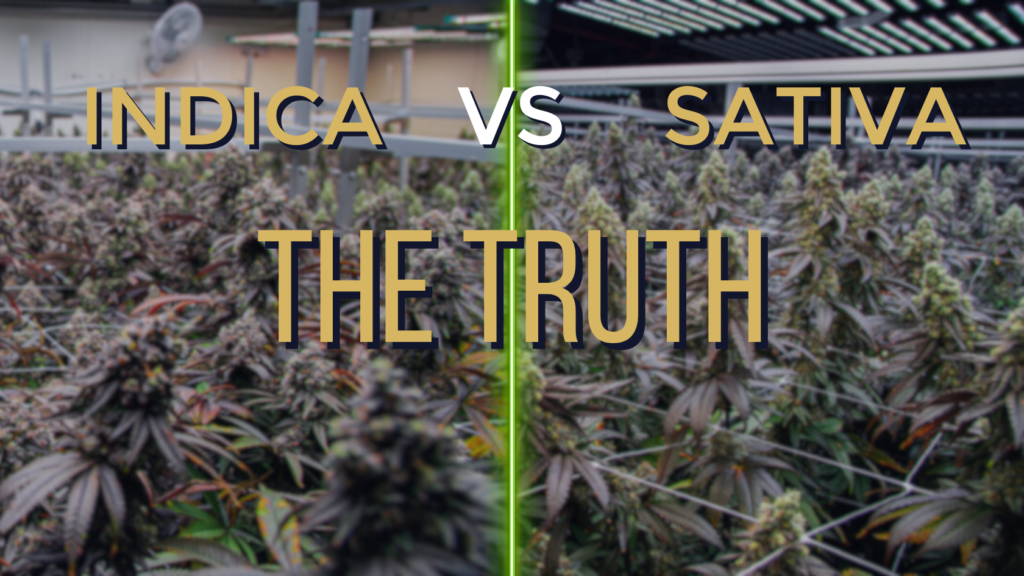
If you’ve ever been to a dispensary, chances are you’ve heard something like this:
“Indica will chill you out. Sativa will lift you up.”
Sounds simple, right? Well… not exactly.
That whole Indica = sleepy, Sativa = energetic idea? It’s actually a pretty outdated way of understanding cannabis—and it might be holding you back from finding the right products for your needs.
Let’s break it down in a way that makes sense.
Where Did “Indica” and “Sativa” Come From?
Believe it or not, these labels didn’t start as a way to describe how cannabis makes you feel. They were originally botanical terms, used by scientists to describe what the plants looked like and where they came from:
-
Cannabis sativa: Tall, skinny plants found in Europe. Mostly used for hemp (think rope, fabric, seeds).
-
Cannabis indica: Short, bushy plants from South and Central Asia. Used for hash and traditional medicine.
Back then, this made sense. But over time, cannabis plants were crossbred like crazy—and now, nearly all the weed we smoke is a mix of different genetics. That tall vs. short thing? It doesn’t really apply anymore. And neither do those old names.
Today’s Cannabis is Mostly “Indica” — But That Doesn’t Really Matter
Here’s the truth: Most cannabis grown for consumption today is genetically closer to the indica category (Voeks, Robert). But that doesn’t mean it’ll knock you out or glue you to the couch.
Why? Because the effects of cannabis don’t come from whether it’s labeled Indica or Sativa. They come from the plant’s unique chemical makeup—specifically, the cannabinoids and terpenes inside.
Let’s dig into that.
What Actually Affects How Cannabis Makes You Feel?
1. Cannabinoids
These are the active compounds in cannabis—THC and CBD are the most famous, but there are over 100 of them, each with different effects. Some help with focus, others may promote sleep or reduce appetite. Scientists are still learning about many of them, but one thing’s clear: these compounds matter way more than the Indica/Sativa label.
2. Terpenes
These are the aromatic oils that give cannabis its smell and flavor—and they play a big role in how it affects you.
For example:
-
Myrcene (also found in mangos) is believed to have relaxing effects.
-
Limonene (found in citrus fruits) is thought to be more uplifting.
So that strain that smells like lemons and makes you feel buzzed? It’s probably high in limonene—not because it’s labeled a “Sativa.”
So why do we still use them?
Honestly? It’s all about convenience.
The Indica vs. Sativa story is easy to tell and easy to remember. It gives new consumers a quick way to make a decision, and it’s become the industry’s go-to shortcut. But as we learn more, we’re realizing that this system doesn’t really help people find the experience they’re looking for.
And with nearly all modern cannabis being hybrids anyway, those labels don’t say much about what’s actually in the jar.
How to Shop for Cannabis
You don’t have to be a cannabis expert to make better choices. Start by paying attention to:
-
Cannabinoid content – Are you looking for high THC? A little CBD? Something with CBG or CBN?
-
Terpene profile – What smells and flavors do you like? Earthy, citrusy, floral? Those can be clues to how it might make you feel.
Think of it like shopping for wine or craft beer. Some folks just want something that tastes good and does the job. Others want to know every little detail. Either way, you’ve got options.
And while dispensaries may still use Indica/Sativa labels, you can ask your budtender about cannabinoids and terpenes instead. That’s where the real insight is.
You Deserve Better Than Two Words
You’re not stuck choosing between just “sleepy” or “hyped.” Cannabis is way more complex—and exciting—than that.
So next time you shop, try to look beyond the label. Ask questions. Smell the flower. Think about what kind of experience you actually want.
Because the more you know, the better your cannabis experience will be.
And if you want a guaranteed, quality experience every time, look for The Clear!
Citation: Voeks, Robert. (2014). Cannabis: Evolution and Ethnobotany. The AAG Review of Books. 2. 54-56. 10.1080/2325548X.2014.901859.

